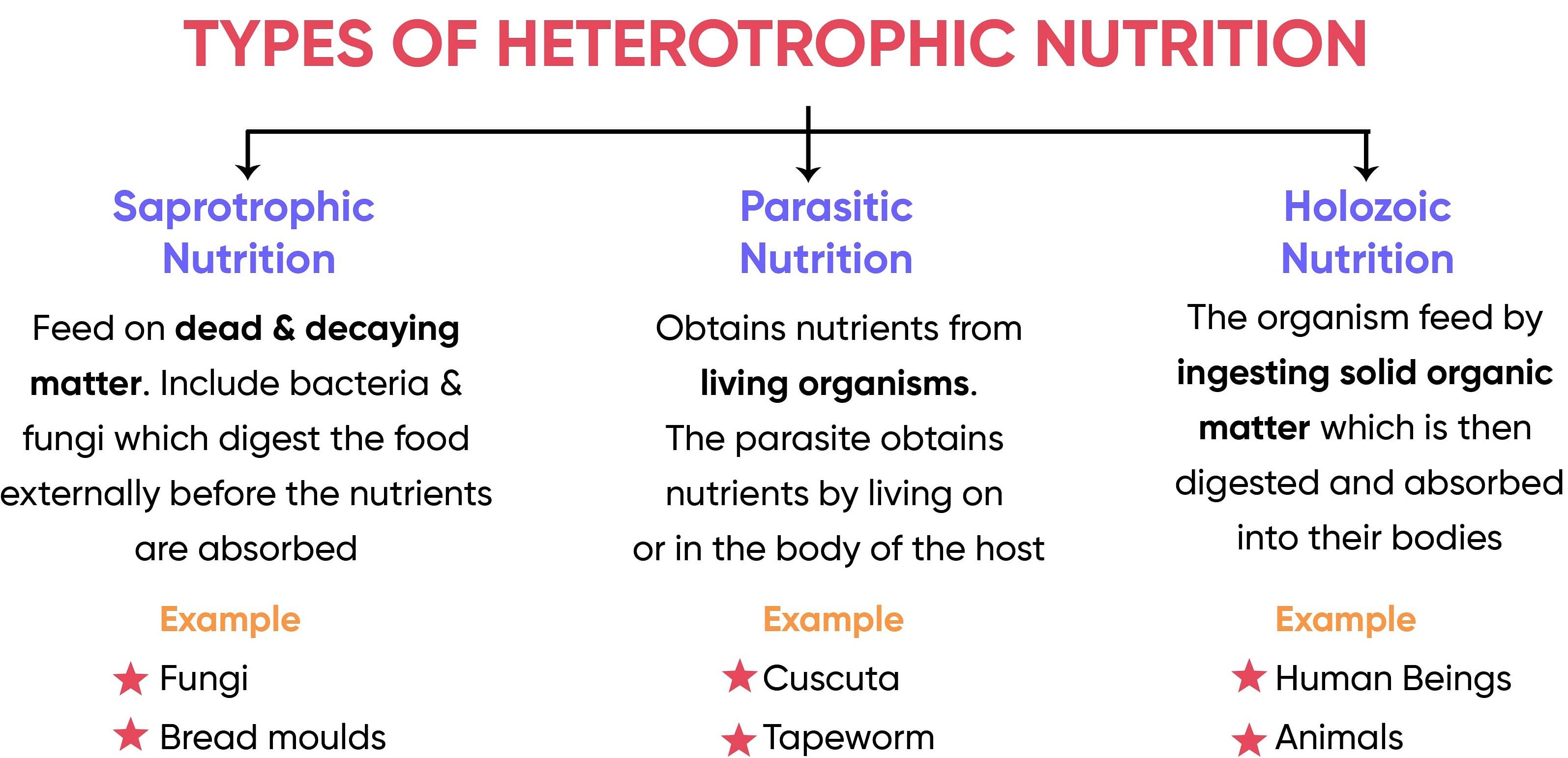Fungi, often overlooked in the grand scheme of life, play a pivotal role in ecosystems worldwide. From breaking down organic matter to forming symbiotic relationships with plants, fungi are indispensable to the environment. But have you ever wondered how fungi derive their nutrition? Are they autotrophic, like plants, producing their own food through photosynthesis, or heterotrophic, relying on external sources for sustenance? This question is central to understanding the role fungi play in the natural world. As organisms that thrive in diverse habitats, fungi exhibit unique nutritional strategies that distinguish them from plants and animals. Their methods of obtaining energy are not only fascinating but also crucial for maintaining ecological balance. Whether you're a biology enthusiast, a student, or just curious about the natural world, delving into the topic of fungi nutrition will provide a deeper appreciation for these remarkable organisms.
Fungi occupy a unique position in the biological world, straddling the line between producers and consumers. Unlike plants, fungi do not possess chlorophyll, the pigment essential for photosynthesis. This absence immediately rules out the possibility of fungi being autotrophic. Instead, they rely on organic matter for their energy needs, making them heterotrophic by nature. However, their heterotrophic behavior is far from simple. Fungi employ various mechanisms, such as saprophytism, parasitism, and mutualism, to secure their nutrients. These strategies allow them to thrive in environments ranging from dense forests to the human body. Understanding these mechanisms not only sheds light on fungi's ecological significance but also highlights their potential applications in biotechnology and medicine.
As we explore the intricacies of fungi nutrition, we will uncover the science behind their heterotrophic lifestyle and how it impacts ecosystems. This article will answer critical questions, such as "Are fungi autotrophic or heterotrophic?" and "How do fungi obtain their nutrients?" By the end, you'll have a comprehensive understanding of fungi's role in the food chain and their unique nutritional adaptations. Whether you're seeking to expand your knowledge or satisfy your curiosity, this exploration of fungi nutrition promises to be both enlightening and engaging.
Read also:Unlock The Fun Infinite Craft Unblocked Ndash The Ultimate Guide
Table of Contents
- What Makes Fungi Unique in Terms of Nutrition?
- Are Fungi Autotrophic or Heterotrophic?
- How Do Fungi Obtain Their Nutrients?
- Saprophytic Fungi: The Decomposers
- Parasitic Fungi: The Opportunists
- Mutualistic Fungi: The Symbionts
- Why Is Fungi Nutrition Important for Ecosystems?
- Can Fungi Be Considered Autotrophic in Any Context?
What Makes Fungi Unique in Terms of Nutrition?
Fungi are unlike any other organisms when it comes to nutrition. While plants are autotrophic, producing their own food through photosynthesis, and animals are heterotrophic, consuming other organisms for energy, fungi occupy a niche of their own. Their nutritional strategies are as diverse as the environments they inhabit. This diversity stems from their inability to produce their own food due to the lack of chlorophyll. Instead, fungi have evolved to break down complex organic compounds into simpler molecules that they can absorb. This process not only sustains fungi but also contributes to nutrient cycling in ecosystems.
One of the most fascinating aspects of fungi nutrition is their ability to decompose organic matter. Fungi secrete enzymes that break down cellulose, lignin, and other complex compounds found in dead plants and animals. This decomposition process releases essential nutrients, such as nitrogen and phosphorus, back into the soil, making them available for other organisms. Without fungi, organic waste would accumulate, and nutrient cycles would be disrupted. This unique ability to recycle nutrients underscores the importance of fungi in maintaining ecological balance.
Why Are Fungi Considered Heterotrophs?
Fungi are classified as heterotrophs because they cannot produce their own food. Unlike autotrophs, which synthesize organic compounds from inorganic sources, fungi rely on external sources of organic matter. This dependency on pre-existing organic material is a defining characteristic of heterotrophic organisms. Fungi obtain their nutrients by secreting digestive enzymes onto their food source, breaking it down externally before absorbing the simpler molecules. This external digestion process is a hallmark of fungi nutrition and sets them apart from other heterotrophs, such as animals, which digest food internally.
How Does Fungi's Heterotrophic Nature Benefit the Environment?
The heterotrophic nature of fungi plays a crucial role in ecosystems. By breaking down dead organic matter, fungi contribute to the decomposition process, which is essential for nutrient cycling. This process ensures that nutrients are continuously recycled, supporting plant growth and maintaining soil fertility. Additionally, fungi form symbiotic relationships with plants, enhancing nutrient uptake and improving plant health. These interactions highlight the interconnectedness of life and demonstrate how fungi's nutritional strategies benefit the environment as a whole.
Are Fungi Autotrophic or Heterotrophic?
The question of whether fungi are autotrophic or heterotrophic is central to understanding their biology. To answer this, we must first define these terms. Autotrophic organisms, such as plants and algae, produce their own food using energy from sunlight or chemical reactions. Heterotrophic organisms, on the other hand, rely on external sources of organic matter for energy. Given that fungi lack chlorophyll and cannot perform photosynthesis, they are unequivocally heterotrophic. This classification is based on their inability to synthesize organic compounds from inorganic sources.
Fungi's heterotrophic nature is evident in their diverse feeding strategies. Some fungi are saprophytic, breaking down dead organic matter, while others are parasitic, deriving nutrients from living hosts. Still, others form mutualistic relationships with plants, exchanging nutrients for carbohydrates. These strategies highlight the adaptability of fungi and their ability to thrive in various environments. By understanding these mechanisms, we gain insight into the ecological roles fungi play and their importance in maintaining ecosystem health.
Read also:How To Securely Connect Remoteiot Vpc Raspberry Pi Free Download For Windows
What Are the Implications of Fungi Being Heterotrophic?
The heterotrophic nature of fungi has significant implications for ecosystems. As decomposers, fungi break down complex organic compounds, releasing nutrients back into the environment. This process supports plant growth and maintains soil fertility, making fungi essential for agriculture and forestry. Additionally, fungi's ability to form symbiotic relationships with plants enhances nutrient uptake, particularly in nutrient-poor soils. These interactions demonstrate how fungi's heterotrophic nature benefits both natural and human-managed ecosystems.
How Does Fungi's Heterotrophic Behavior Compare to Other Organisms?
Fungi's heterotrophic behavior is distinct from that of other heterotrophs, such as animals and bacteria. While animals digest food internally, fungi digest food externally by secreting enzymes. This external digestion allows fungi to break down complex compounds, such as cellulose and lignin, that are otherwise difficult to decompose. Bacteria, on the other hand, often rely on simpler organic compounds for energy. These differences highlight the unique adaptations of fungi and their importance in nutrient cycling.
How Do Fungi Obtain Their Nutrients?
Fungi employ a variety of strategies to obtain their nutrients, each tailored to their specific ecological niche. The most common methods include saprophytism, parasitism, and mutualism. Saprophytic fungi decompose dead organic matter, breaking it down into simpler compounds that they can absorb. Parasitic fungi, on the other hand, derive nutrients from living hosts, often causing harm in the process. Mutualistic fungi form symbiotic relationships with plants, exchanging nutrients for carbohydrates. These strategies demonstrate the versatility of fungi and their ability to adapt to different environments.
What Are the Different Ways Fungi Feed?
Fungi's feeding mechanisms are as diverse as their habitats. Saprophytic fungi, such as molds and yeasts, decompose dead plants and animals, recycling nutrients back into the ecosystem. Parasitic fungi, such as rusts and smuts, infect living organisms, deriving nutrients at the host's expense. Mutualistic fungi, such as mycorrhizae, form partnerships with plants, enhancing nutrient uptake and improving plant health. These feeding strategies highlight the ecological significance of fungi and their role in maintaining ecosystem balance.
Why Is External Digestion Important for Fungi?
External digestion is a defining characteristic of fungi nutrition. By secreting enzymes onto their food source, fungi break down complex organic compounds into simpler molecules that they can absorb. This process allows fungi to access nutrients that would otherwise be inaccessible. External digestion also enables fungi to decompose tough materials, such as cellulose and lignin, which are resistant to breakdown by other organisms. This ability underscores the importance of fungi in nutrient cycling and ecosystem health.
Saprophytic Fungi: The Decomposers
Saprophytic fungi play a vital role in ecosystems by breaking down dead organic matter. These fungi secrete enzymes that decompose complex compounds, such as cellulose and lignin, into simpler molecules. This decomposition process releases essential nutrients, such as nitrogen and phosphorus, back into the soil, making them available for other organisms. Without saprophytic fungi, organic waste would accumulate, and nutrient cycles would be disrupted.
Parasitic Fungi: The Opportunists
Parasitic fungi derive nutrients from living hosts, often causing harm in the process. These fungi infect plants, animals, and even humans, leading to diseases such as rusts, smuts, and athlete's foot. While parasitic fungi can be detrimental to their hosts, they also play a role in regulating populations and maintaining ecological balance.
Mutualistic Fungi: The Symbionts
Mutualistic fungi form symbiotic relationships with plants, exchanging nutrients for carbohydrates. Mycorrhizal fungi, for example, enhance nutrient uptake, particularly in nutrient-poor soils. These relationships benefit both fungi and plants, highlighting the interconnectedness of life and the importance of fungi in ecosystems.
Why Is Fungi Nutrition Important for Ecosystems?
Fungi nutrition is crucial for maintaining ecosystem health. By breaking down organic matter, fungi recycle nutrients, supporting plant growth and maintaining soil fertility. Fungi also form symbiotic relationships with plants, enhancing nutrient uptake and improving plant health. These roles underscore the importance of fungi in ecosystems and their contribution to nutrient cycling.
Can Fungi Be Considered Autotrophic in Any Context?
While fungi are predominantly heterotrophic, some species exhibit characteristics that blur the line between autotrophy and heterotrophy. For example, certain fungi can form associations with photosynthetic organisms, indirectly benefiting from photosynthesis. However, these instances are exceptions rather than the rule, and fungi remain classified as heterotrophs.
Frequently Asked Questions
Are Fungi Autotrophic or Heterotrophic?
Fungi are heterotrophic organisms, as they rely on external sources of organic matter for energy. Unlike autotrophs, which produce their own food, fungi break down complex compounds to obtain nutrients.
How Do Fungi Obtain Their Nutrients?
Fungi obtain their nutrients by secreting enzymes onto their food source, breaking it down externally before absorbing the simpler molecules. This process, known as external digestion, is a defining characteristic of fungi nutrition.
Why Are Fungi Important for Ecosystems?
Fungi play a crucial role in ecosystems by decomposing organic matter, recycling nutrients, and forming symbiotic relationships with plants. These functions support plant growth, maintain soil fertility, and contribute to nutrient cycling.
Conclusion
Fungi nutrition is a fascinating topic that highlights the unique adaptations of these organisms. As heterotrophs, fungi rely on external sources of organic matter, employing diverse strategies to obtain their nutrients. Their role in ecosystems is indispensable, from breaking down dead organic matter to forming symbiotic relationships with plants. Understanding fungi nutrition not only deepens our appreciation for these remarkable organisms but also underscores their importance in maintaining ecological balance. For further reading, you can explore this external resource on fungi and their ecological roles.

